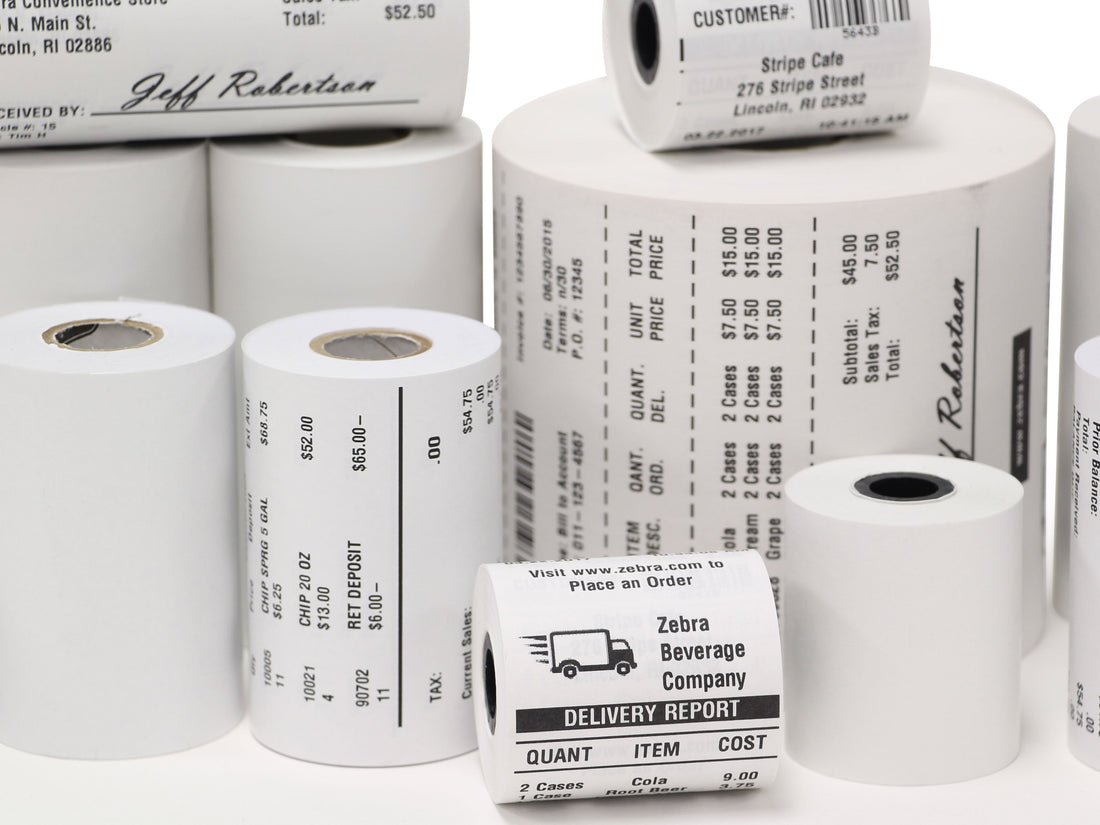
Thermal Paper Longevity: Tips & Best Practices for Businesses
Quick summary: This guide explains how to extend the life of thermal paper used for receipts, tickets, and labels. You’ll learn storage best practices, durability factors, and the differences between paper grades—plus links to compatible thermal receipt printers and label rolls in the UAE.
Table of Contents
- What is Thermal Paper & Why It Matters
- How Thermal Paper Works (Composition)
- Key Factors That Affect Durability
- Shelf Life Before Use (Storage)
- How Long Prints Last After Printing
- Common Business Applications
- How to Make Prints Last Longer
- Environmental Impact & Hot Climates
- Comparing Thermal Paper Grades
- FAQs
- Next Steps
What is Thermal Paper & Why It Matters
Thermal paper is heat‑sensitive media that forms images when a printer’s thermal head applies heat. Because it’s inkless, it’s fast, clean, and low‑maintenance—perfect for POS receipts, shipping labels, tickets, and medical printouts used daily across the UAE.
How Thermal Paper Works (Composition)
- Base paper: Provides strength and smoothness.
- Reactive coating: Dye + developer + stabilizers that darken when heated.
- Top coat (premium grades): Extra protection from light, oils, and moisture.
Result: sharp, smudge‑free prints without ink or ribbons, reducing downtime and cost.
Key Factors That Affect Durability
- Paper quality: Premium/top‑coated paper resists fading longer.
- Light, heat, humidity: Direct sun, high temps, and moisture accelerate fade.
- Handling & storage: Oils, plasticizers, and compression can damage the coating.
- Printer condition: Clean heads & correct heat settings improve legibility and life.
Shelf Life Before Use (Storage)
Unprinted rolls typically last 1–3 years if stored correctly. Follow these best practices:
- Keep in a cool, dry, dark place; avoid windows, cars, and hot storerooms.
- Leave rolls in their original sealed packaging until use.
- Avoid tight compression; do not stack heavy boxes directly on rolls.
How Long Prints Last After Printing
With proper handling (low light, low heat, low humidity), printed receipts/labels can remain readable for 7–10 years. Exposure to harsh conditions can reduce this to months. For longer‑term labeling, consider thermal transfer label printers with ribbons.
Common Business Applications
- Retail & hospitality: POS receipts (pair with thermal receipt printers).
- Logistics & eCommerce: Shipping labels (4×6 in) using label rolls.
- Healthcare: Reports/records (where permitted).
- Transport & events: Boarding passes, tickets, and queueing slips.
How to Make Prints Last Longer
- Store smart: Cool, dry, dark; target humidity < 60%.
- Minimize contact with soft plastics (plasticizers), oils, and solvents.
- Handle carefully: Clean, dry hands; avoid folding creases on printed areas.
- Maintain printers: Regular head cleaning; correct darkness/heat settings.
Environmental Impact & Hot Climates
In warm regions like the UAE, heat and sunlight speed up chemical darkening and fade. If prints must be kept for audits or long storage:
- Choose top‑coated or archival‑grade thermal paper.
- Store documents in archival sleeves away from light and heat.
- For labels, consider thermal transfer (wax/wax‑resin/resin ribbons) for maximum longevity—see barcode ribbons.
Comparing Thermal Paper Grades
| Grade | Typical Longevity* | Protection | Best For |
|---|---|---|---|
| Standard (uncoated top) | Up to ~5 years | Basic fade resistance | Fast receipts, short‑term records |
| Premium (top‑coated) | ~7–10 years | Better light/oil/moisture resistance | Retail, hospitality, banking |
| Archival/long‑life | 10+ years (ideal storage) | Maximum durability | Records that must last; hot climates |
*Longevity assumes proper storage and handling.
FAQs
How long do thermal receipts last in UAE conditions?
With cool, dark, low‑humidity storage and premium paper, 7–10 years is achievable. Sunlight or heat can reduce this significantly.
Can I laminate thermal receipts?
Standard hot lamination can damage prints. If you must protect receipts, use cold lamination or archival sleeves designed for thermal media.
What if I need labels that last outdoors?
Use thermal transfer printers with the right ribbon (wax‑resin/resin) and durable label stocks. See barcode label printers and industrial label rolls.
Next Steps
- Browse Thermal Receipt Printers for POS counters.
- Shop Label Rolls (100×150mm, 50×30mm, and more).
- For long‑life labels, explore Thermal Transfer Printers + Barcode Ribbons.
Need help? Contact NEOTECH for a recommendation based on your printer model, environment, and compliance needs.
Updated: August 9, 2025 • NEOTECH UAE

